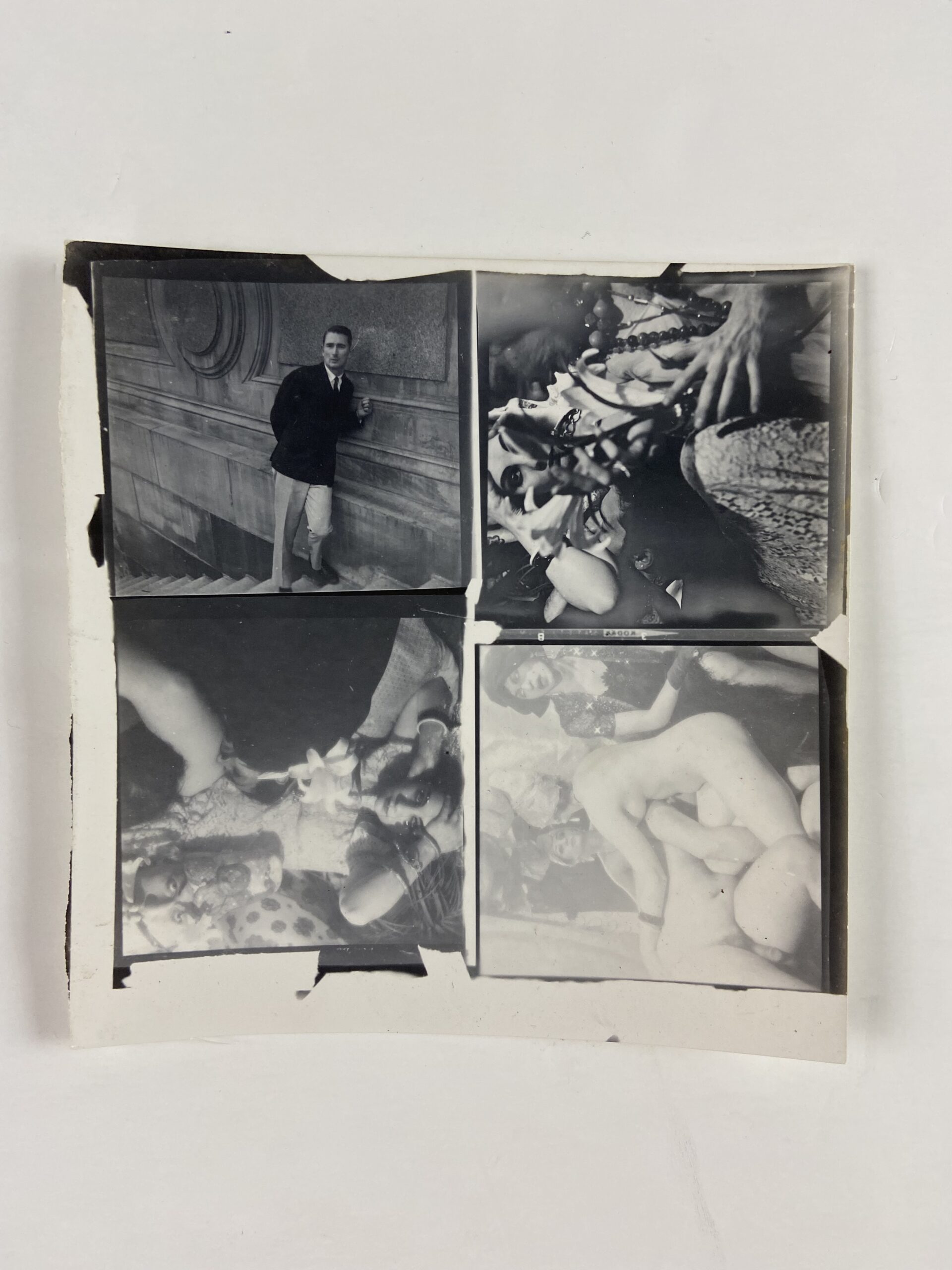
Jack Smith
Composite of four photographs from “The Beautiful Book”
1962
Silver prints
Each photograph: 4.5 in (11.43 cm)
This composite of four images comes from The Beautiful Book (1962), the only collection of Jack Smith’s photographs to be published during his lifetime. The publication is comprised of 19 hand-tipped black-and-white contact prints (2 1/4 x 2 1/4 inches) and was originally published in an edition of 200 copies. The photographs here were likely produced in Smith’s Lower East Side apartment except for the top left photo, which is the last picture in the book and a portrait of Smith beneath the Brooklyn Bridge taken by filmmaker Ken Jacobs. Smith and his associates assembled the books during the late spring and early summer of 1962, before shooting began on Smith’s most renowned film, Flaming Creatures. Published and distributed by Piero Heliczer’s press, the dead language, The Beautiful Book was advertised with a statement from the filmmaker Ron Rice: “we studied these photographs with keen eye discovering new & more beautiful images hidden in every dissolve & curve of the draperies & silks which ran through these masterpieces like some long lost mysterious fume from byzantium.”
Jack Smith (1932-1989) was a New York-based filmmaker, photographer, and actor known for his pioneering influence in experimental filmmaking and performance art. Smith moved to New York City in 1953, where he attended film classes at the City College of New York, finding employment as a photographer. He studied dance with Ruth St. Denis, direction with Lee Strasberg, and worked as an actor and assistant with Ken Jacobs before shooting his first film, Scotch Tape, in 1959. His best-known film, Flaming Creatures (1963), was confiscated by the New York Police Department and banned throughout the US due to nudity and charges of obscenity. Smith never again created a finished artwork. His next film, Normal Love (1963), was often re-spliced as it ran, repeatedly reedited, and regularly awarded new titles such as Normal Fantasy, Exotic Landlordism of Crab Lagoon, and The Great Pasty Triumph.
From the late 1960s into the 1980s, Smith focused on theater and performance, and combined live happenings with screenings of films and slideshows. Shows created during this period include Brassieres of Atlantis (1969), Secret of Rented Island (1976–77), I Was a Mekas Collaborator (1978), Art Crust on Crab Lagoon (1981), What’s Underground About Marshmallows (1981), I Was a Male Yvonne De Carlo for the Lucky Landlord Underground (1982) and Death of a Penguin (1985). Smith published essays and short stories in Film Culture and other periodicals, and appeared in productions by Andy Warhol, Robert Wilson, and Ken Jacobs.
Smith’s work critiques the self-serving ends of commodification and containment, illustrated by his ideas of “lucky landlordism,” “rented island,” “claptailism,” “art crust,” etc. Smith’s vision is one that consequently imbues art into life, to the point of rendering assumed distinctions between the two as absurd and elitist.
Smith died of AIDS in 1989.
Provenance
Swann Auction Galleries, Sale 2583 Fine Photographs, October 21, 2021, Lot 194
See also
“Jack Smith: Art Crust of the Spiritual Oasis,” Artists Space, 22 June – 9 September 2018
Jack Smith, Flaming Creatures (1962-63)
Jack Smith in the collection of the MoMA
Jack Smith in the collection of the Whitney Museum of American Art